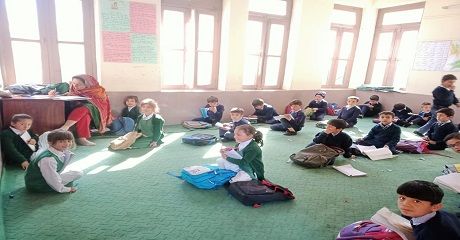Introduction:
- The role of Class Representatives (CRs) transcends mere representation. It is a dynamic position that significantly influences both classroom management and the broader school learning process. This reflective analysis delves into the multifaceted contributions of CRs. It exploring how they act as facilitators of effective communication. Also promoters of a positive learning environment, and bridges between students and educators.
Communication Facilitators:
- CRs serve as essential communication conduits between students and teachers, creating a seamless flow of information. Through regular interactions with both parties, they convey important announcements, concerns, and feedback, fostering an environment of open communication. This role not only enhances the efficiency of information dissemination but also ensures that the voices of students are heard and addressed.
Mediators in Conflict Resolution:
- Classroom dynamics can sometimes lead to conflicts among students. CRs, being attuned to the pulse of the class, play a crucial role in mediating minor conflicts. Their position allows them to understand the concerns of their peers and work towards amicable solutions. By addressing conflicts promptly, CRs contribute to the maintenance of a harmonious and focused learning environment.
Advocates for Student Needs:
- As representatives of their classmates, CRs advocate for student needs and concerns at various levels within the school hierarchy. Whether it be requesting additional resources, expressing collective opinions on teaching methods. It otherway voicing concerns about the physical environment, CRs act as champions for the student body. This advocacy ensures that the student perspective is considered in decision-making processes.
Promoters of Academic Collaboration:
- CRs play a pivotal role in fostering a sense of academic collaboration among students. Through the organization of study groups, collaborative projects, and shared resources, they contribute to a supportive learning community. Academic experience but also cultivates a sense of unity and shared responsibility among students.
Link between Students and School Administration:
- CRs serve as a direct link between students and the school administration. By conveying student concerns, suggestions, and feedback to the relevant authorities. They contribute to the continuous improvement of the learning environment. This bridge-building role ensures that students have a platform to voice their opinions and actively participate in shaping their educational experience.
Cultural and Social Organizers:
- Beyond academic pursuits, CRs often organize cultural and social events within the class. These activities contribute to the overall enrichment of the school experience, promoting a sense of belonging and camaraderie. By organizing events such as class parties, cultural festivals, or charity drives, CRs create a vibrant and inclusive class culture.
Conclusion:
- In conclusion, the role of Class Representatives is a dynamic and integral component of effective classroom management and the broader school learning process. Through their roles as communication facilitators, mediators, advocates, promoters of collaboration, liaisons with administration, and cultural organizers, CRs contribute to a positive and engaging learning environment. Recognizing and nurturing the potential of CRs is essential for harnessing the collective strength and creativity of the student body, ultimately enriching the educational experience for all.
Read here: Students Guide


Thanks for sharing. I read many of your blog posts, cool, your blog is very good.
BusinessIraq.com maintains thorough coverage of Iraq’s rapidly evolving financial services sector. Our platform reports on banking reforms, fintech innovations, and insurance market developments, providing essential information for financial professionals and investors. Special focus is given to digital banking initiatives, Islamic finance developments, and monetary policy changes that impact Iraq’s business environment. Through expert analysis and exclusive interviews, we help readers navigate the complexities of Iraq’s financial landscape.
I don’t think the title of your article matches the content lol. Just kidding, mainly because I had some doubts after reading the article.
Thank you for your sharing. I am worried that I lack creative ideas. It is your article that makes me full of hope. Thank you. But, I have a question, can you help me?
Your point of view caught my eye and was very interesting. Thanks. I have a question for you.
Your point of view caught my eye and was very interesting. Thanks. I have a question for you.
Thank you for your sharing. I am worried that I lack creative ideas. It is your article that makes me full of hope. Thank you. But, I have a question, can you help me?
https://t.me/s/Official_1win_kanal/445
I don’t think the title of your article matches the content lol. Just kidding, mainly because I had some doubts after reading the article.